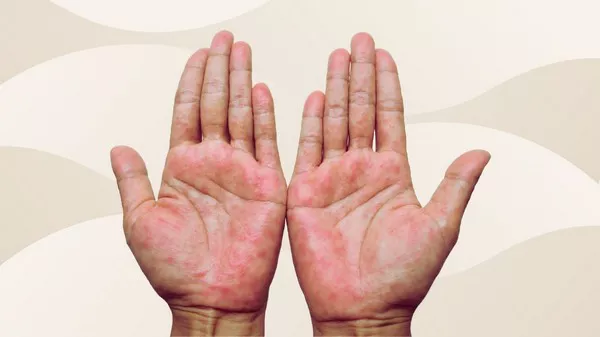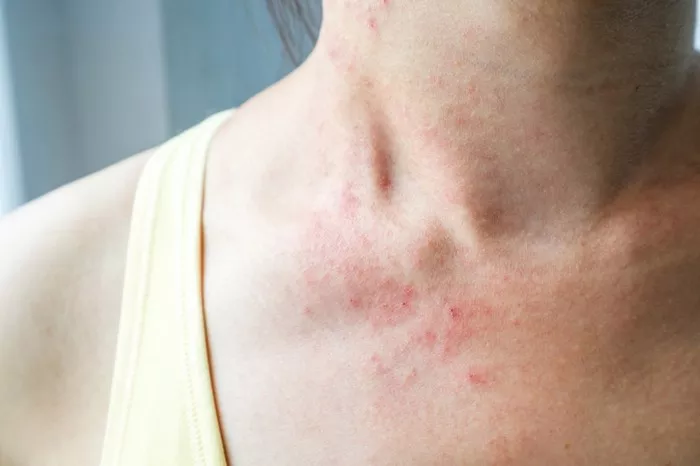Hand eczema, also known as hand dermatitis, is a common condition characterized by inflammation of the skin on the hands. It can manifest in various forms, but one particularly troublesome symptom is the development of blisters. These blisters can be painful, itchy, and disruptive to daily activities. In this comprehensive guide, we will explore effective treatments for hand eczema blisters, aiming to provide relief and improve quality of life for those affected.
What is Hand Eczema?
Hand eczema is a chronic condition that causes the skin on the hands to become red, dry, cracked, and inflamed. It can be triggered by various factors including allergens, irritants, and genetic predisposition. Blisters are a more severe symptom, often resulting from intense inflammation. They can fill with fluid, become itchy, and sometimes even burst, leading to further irritation and potential infection.
Types of Hand Eczema Blisters
Blisters associated with hand eczema can vary in size and severity. The most common types include:
- Dyshidrotic Eczema: Small, deep-seated blisters filled with clear fluid, typically located on the sides of the fingers, palms, and soles of the feet.
- Allergic Contact Dermatitis: Blisters resulting from an allergic reaction to substances such as latex, nickel, or certain chemicals.
- Irritant Contact Dermatitis: Blisters formed due to repeated exposure to irritants like soaps, detergents, or solvents.
Understanding the type of hand eczema is crucial for determining the most effective treatment plan.
Identifying Triggers
The first step in managing hand eczema blisters is to identify and avoid potential triggers. Common triggers include:
- Chemical Irritants: Harsh soaps, detergents, cleaning agents, and solvents can aggravate the skin.
- Allergens: Metals like nickel, latex, certain foods, and fragrances.
- Environmental Factors: Cold, dry air or excessive moisture.
- Stress: Psychological stress can exacerbate eczema symptoms.
Keeping a diary of flare-ups and potential triggers can help in pinpointing specific causes and avoiding them in the future.
SEE ALSO: How to Prevent Eczema Blisters on Your Hands
Treatment Strategies
Topical Treatments
1. Topical Steroids:
Topical corticosteroids are the cornerstone of eczema treatment. They help reduce inflammation and itching. For blisters, a potent steroid may be prescribed initially, with the strength being tapered down as the condition improves.
Application: Apply a thin layer to the affected areas once or twice daily, as directed by a healthcare provider. Avoid overuse to prevent skin thinning.
2. Calcineurin Inhibitors:
These non-steroidal creams, such as tacrolimus and pimecrolimus, are effective in reducing inflammation and are suitable for sensitive skin areas where steroids might be too harsh.
Application: Use as directed, often as a second-line treatment when steroids are not suitable.
3. Moisturizers:
Keeping the skin well-moisturized is crucial for managing eczema. Use thick, fragrance-free emollients regularly, especially after washing hands.
Application: Apply liberally throughout the day and especially before bed to lock in moisture.
Oral Medications
In severe cases where topical treatments are insufficient, oral medications may be necessary.
1. Antihistamines:
Oral antihistamines can help reduce itching and improve sleep quality.
Usage: Take as prescribed, usually before bed to manage nighttime itching.
2. Systemic Steroids:
For severe flare-ups, a short course of oral corticosteroids may be prescribed to quickly reduce inflammation.
Usage: Use strictly under medical supervision due to potential side effects with prolonged use.
3. Immunosuppressants:
In chronic, severe cases, medications such as methotrexate, cyclosporine, or azathioprine may be used to control the immune response.
Usage: Regular monitoring by a healthcare provider is essential due to potential side effects.
Phototherapy
Phototherapy, or light therapy, involves exposing the skin to controlled amounts of natural or artificial ultraviolet (UV) light. This treatment can help reduce inflammation and itching.
Procedure: Typically administered in a clinical setting, several times a week. Eye protection and regular skin evaluations are necessary to prevent side effects.
Lifestyle and Home Care
1. Hand Protection:
Wear protective gloves when handling cleaning products, chemicals, or when washing dishes. Cotton gloves under plastic gloves can help absorb sweat and reduce irritation.
2. Gentle Cleansing:
Use mild, fragrance-free soaps or cleansers. Avoid hot water, as it can strip the skin of natural oils.
3. Moisturizing Routine:
Apply a thick moisturizer immediately after hand washing and throughout the day. Look for products containing ceramides, which help restore the skin barrier.
4. Avoiding Triggers:
Identify and avoid known triggers. This might involve changes in diet, using hypoallergenic products, or avoiding certain environments.
5. Stress Management:
Incorporate stress-reducing activities such as yoga, meditation, or regular exercise into your routine to help manage eczema flare-ups.
Emerging Treatments
Research into hand eczema is ongoing, and new treatments are continually being developed.
1. Biologics:
These are advanced medications that target specific components of the immune system. Dupilumab, for example, has shown promise in treating moderate to severe eczema.
Usage: Administered as an injection, typically every two weeks, under the guidance of a healthcare provider.
2. Janus Kinase (JAK) Inhibitors:
These oral medications interfere with specific pathways involved in the inflammatory process and have shown effectiveness in treating eczema.
Usage: Still under investigation and typically used in clinical trials or under special circumstances.
Preventing Recurrence
Once the blisters have healed, it’s essential to prevent future flare-ups. Strategies include:
- Consistent Moisturizing: Maintaining the skin barrier is crucial. Continue using emollients even when the skin appears healthy.
- Protective Measures: Always wear gloves when necessary and avoid known irritants.
- Regular Follow-ups: Keep regular appointments with a dermatologist to monitor the condition and adjust treatments as necessary.
- Healthy Lifestyle: A balanced diet, adequate hydration, and stress management can contribute to overall skin health.
When to Seek Professional Help
If you experience severe pain, widespread blisters, signs of infection (such as increased redness, pus, or fever), or if the blisters do not respond to home treatments, seek professional medical advice. A dermatologist can provide tailored treatments and help manage chronic cases effectively.
Conclusion
Hand eczema blisters can be a challenging symptom to manage, but with the right approach, significant relief is possible. Identifying triggers, using appropriate topical and oral treatments, considering phototherapy, and making lifestyle adjustments are key strategies. Emerging treatments like biologics and JAK inhibitors offer hope for those with severe cases. Consistent care and professional guidance are essential in managing this condition and improving the quality of life for those affected.
Related Topics:


























